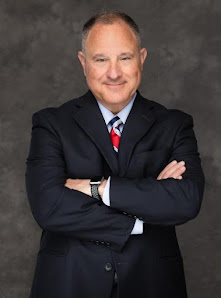The overhaul of South Carolina’s death chamber was completed three years ago. Now, a team of sharpshooters is practicing its aim for what is poised to be the first firing squad execution in the state’s history on March 7, 2025. according to NBC News.
Death by firing squad remains an extremely uncommon form of
capital punishment in the United States, with only three carried out since the
death penalty was ruled constitutional in 1976. All three occurred in Utah —
the last in 2010, according to the nonprofit Death Penalty Information Center.
Brad Sigmon, the condemned South Carolina prisoner, opted
for firing squad over the state’s primary method of electrocution or the more
widely used practice of lethal injection.
“He’s made the best choice that he can, but the fact that he
had to make it at all is horrifying,” said Sigmon’s lawyer, Gerald “Bo” King.
Sigmon, 67, who was convicted in 2002 in the beating deaths
of his ex-girlfriend’s parents, declined lethal injection, King said, because
of concerns over its use in the last three executions in South Carolina.
In a filing last week asking the South Carolina Supreme
Court to halt Sigmon’s execution, his legal team noted the state’s autopsy
report for Marion Bowman Jr., who was put to death by lethal injection
last month, indicates he was given “10 grams of pentobarbital” and “died with
his lungs massively swollen with blood and fluid,” akin to “drowning.”
That amount of pentobarbital is double what corrections
officials had attested to needing under the state’s lethal injection protocol,
according to the filing.
King argued that the state must disclose more information
about the protocol and the quality of its pentobarbital on hand in order for
Sigmon to have made a fair choice.
State prosecutors said in a response Friday to Sigmon’s
filing that because he chose death by firing squad, he has “waived any argument
about lethal injection.” They also contend the second dose of pentobarbital was
administered as outlined under the state’s protocol and nothing was unusual
with how the other inmates died.
With Sigmon’s execution drawing closer, barring a
last-minute reprieve, the return of a firing squad execution is also raising
questions about whether it is ushering a new — yet old — chapter in America’s
use of the death penalty.
During the Civil War, firing squads were common for executing soldiers for desertion; in some
cases, they would be blindfolded and tied to stakes before being shot. A
century ago, Nevada executed a prisoner using an automated machine that fired the bullets so
that no person had to.
In the modern era of capital punishment, only a handful of
states, including Mississippi and Oklahoma, allow for the method, with South Carolina legalizing it in 2021 and Idaho following two years later amid a nationwide
shortage of lethal injection drugs.
Corinna Barrett Lain, a professor at the University of
Richmond School of Law, said states are moving to the firing squad because
lethal injection has been problematic, with reports of “botched” incidents in recent years.
“States can’t get the drugs. They can’t get qualified
medical professionals to do it,” Lain, the author of the upcoming book “Secrets
of the Killing State: The Untold Story of Lethal Injection,” said in an email.
“The firing squad is too honest, too explicit about what the
death penalty is. People tend to think it’s barbaric and archaic,” Lain said,
adding: “In that way, it may start some very important, and long overdue conversations
about the death penalty in this country.”
Utah’s use of the firing squad
The last firing squad execution, in 2010, lasted about four
minutes, from when the death chamber’s curtain was lifted to when the bullets
struck Utah
inmate Ronnie Lee Gardner, according to media witnesses.
Gardner, 49, was sentenced to death after fatally shooting
an attorney, Michael Burdell, and wounding a bailiff, George Kirk, as he
attempted to flee a courthouse in 1985. Gardner was already in custody for the
killing of a bartender, Melvyn John Otterstrom, a year earlier.
Prison staff members strapped Gardner to a chair, and after
he declined to make a final statement, fit a black hood over his head. A small
white target with a bull’s-eye pattern was fastened to his chest. Five shooters
— volunteers described as certified police officers — fired .30-caliber
Winchester rifles from behind a wall with a gun port.
The number of shooters helped to ensure one of the bullets
was fatal, although one firearm was also fed a blank so that each shooter was
uncertain who was directly responsible for the death, officials said.
Media witnesses described Gardner appearing to flinch
and move his arm after being shot, leaving them to wonder if he was still alive
and would have to be shot again. But a medical examiner declared him dead a
short time later, they said.
Jennifer Dobner, who covered the execution for The
Associated Press, said it was a “very clinical and precise procedure.” Fifteen
years later, she still recalls a “boom, boom” from the rapid gunfire, then “the
target on his chest kind of blew up, the fabric kind of blew up,” and the room
fell silent. The execution was traumatic for the Gardner family, she said.
“They have their own trauma from losing their brother this
way. Not that they condone anything that he did, but it is a very extreme form
of punishment,” Dobner said.
To read more CLICK HERE








No comments:
Post a Comment